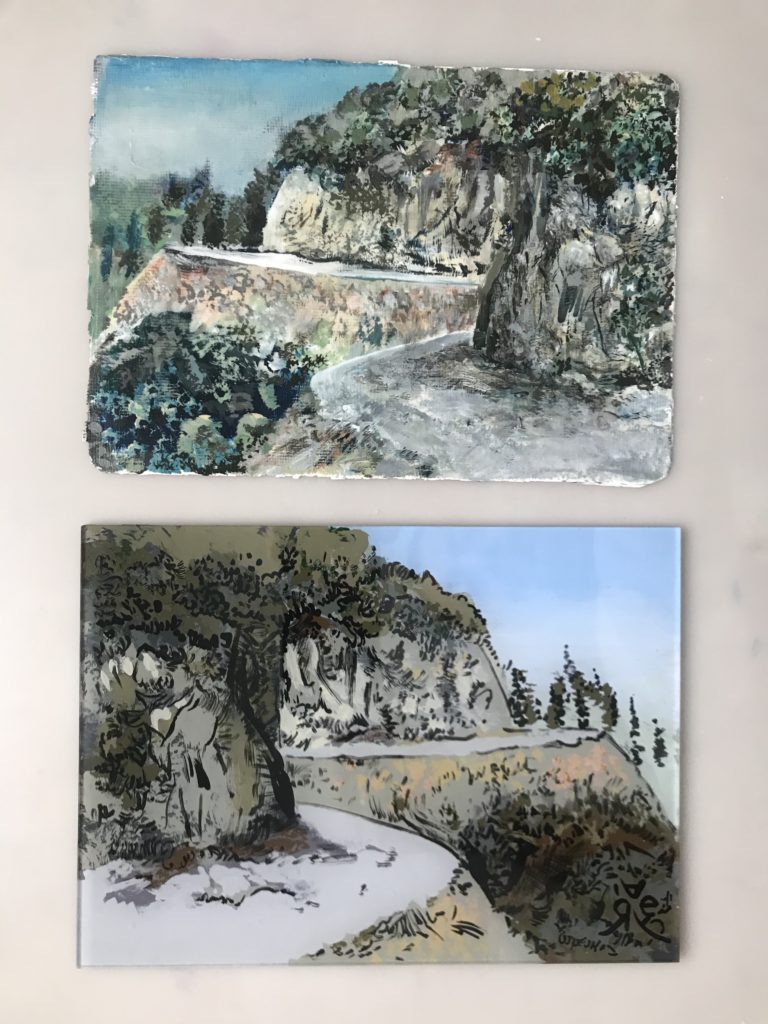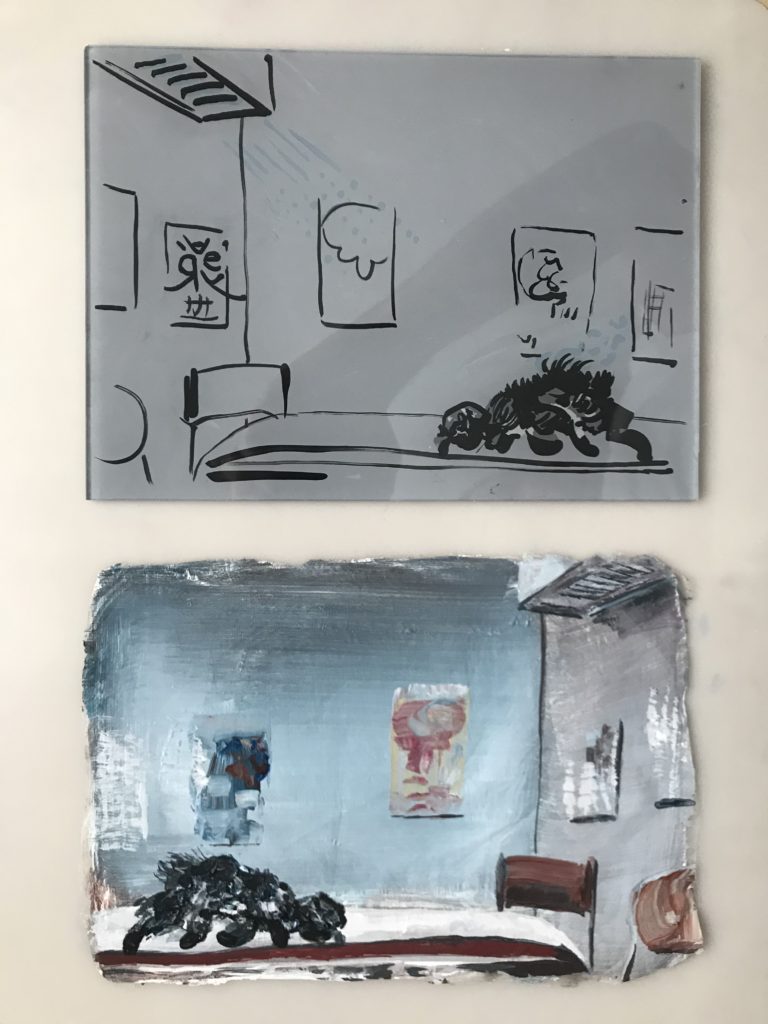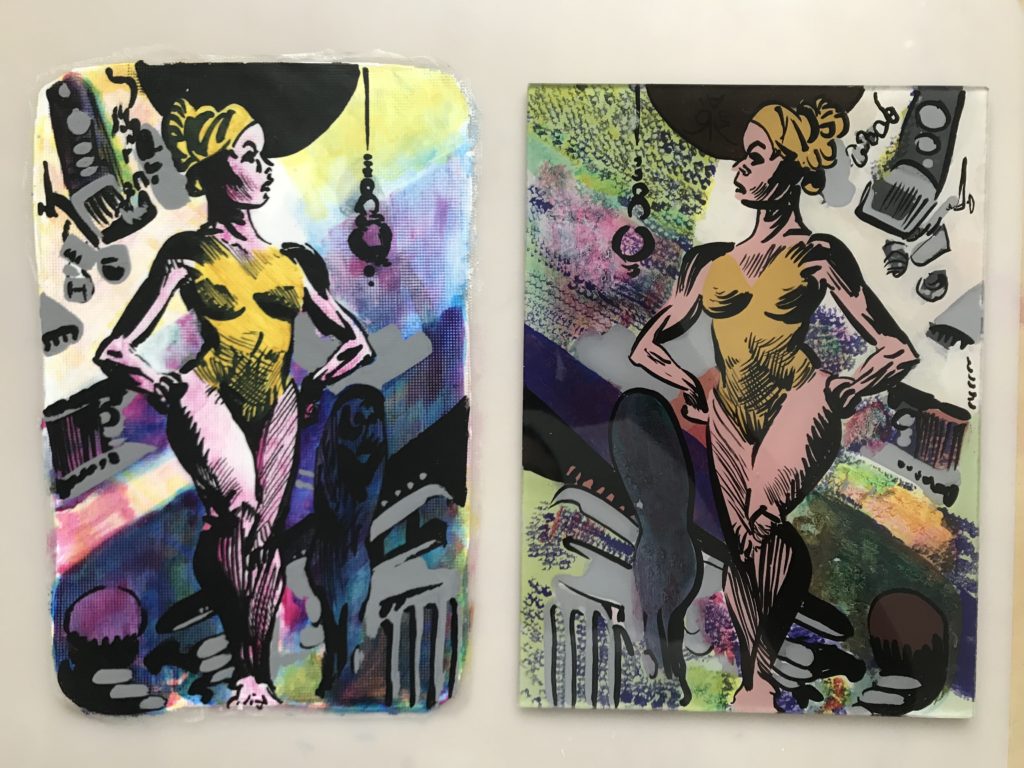Flat Toys – The Origin
It started with the idea of plastic, some years ago. My paintings were now acrylic, and I was becoming interested in the notion that they were essentially plastic. Basing everything on some obscure nostalgia for my old toys, I soon concluded I wanted my paintings to become entirely plastic, and this included the substrate on which they sat. After some time exploring to find what surfaces would work with acrylic paint, I settled on acrylic glass. With this final component, they would be one hundred percent plastic, and I would call them my flat toys, which was an oblique reference to the poetry book, Sad Toys by Takuboku Ishikawa.
But transparent substrates posed the see-through problem. If the backside were transparent, wouldn’t it behoove me to use this feature somehow? I recalled how some painters used it to do reverse paintings. This technique is when you paint on a transparent surface in order to see through the backside. If I followed through with it, both sides of the painting would be active. A double-sided painting felt more like a toy because it was an object you can turn in your hand. Also, on a philosophical level, duality was the language I used when reasoning about life and the world, so it suited any ideology I might push forward in an artwork.
This is a simplistic overview of how I arrived at this feature in my art, but it might show how I have been making double-sided paintings for the past several years. It has gone through a few phases. When my paintings were under the influence of Tarot cards, I argued that the backside shared a convenient metaphor with the backside of a card. Those paintings had backsides that had an abstract motif with my monogram on it. When I stopped making my version of the Tarot, my paintings simply had backsides because I felt they should all have backsides.
Then, I had the idea that the backsides should mirror the fronts. This gave some interesting results but it was tedious to make, slowing down my process to a crawl. I then felt that if it had only elements from the frontside and made these parts look amenable to viewing if someone just so happened to turn the painting around to look at the back, then that was enough. These elements could be images or objects that I felt needed clarification or that I wanted to see in a different version, such as a reconfigured color scheme or added or subtracted features. I could play with this type of reverse painting for variable backside results. If I wanted to include the entire thing in reverse as a see-through underpainting, then I could go all the way and see what happens.
These newer backside ideas were relinquishing all manner of results, and I was happy with some and not with others. I felt that the backside was there and the painting had the potential to be flipped if I felt like viewing its other half. Oftentimes, the frontside was the stronger side, but there were times the backside shined brighter. And in those uncommon cases when the reverse painting is more effective, wouldn’t it be better to display that side outward when it came time to show them?





One Comment